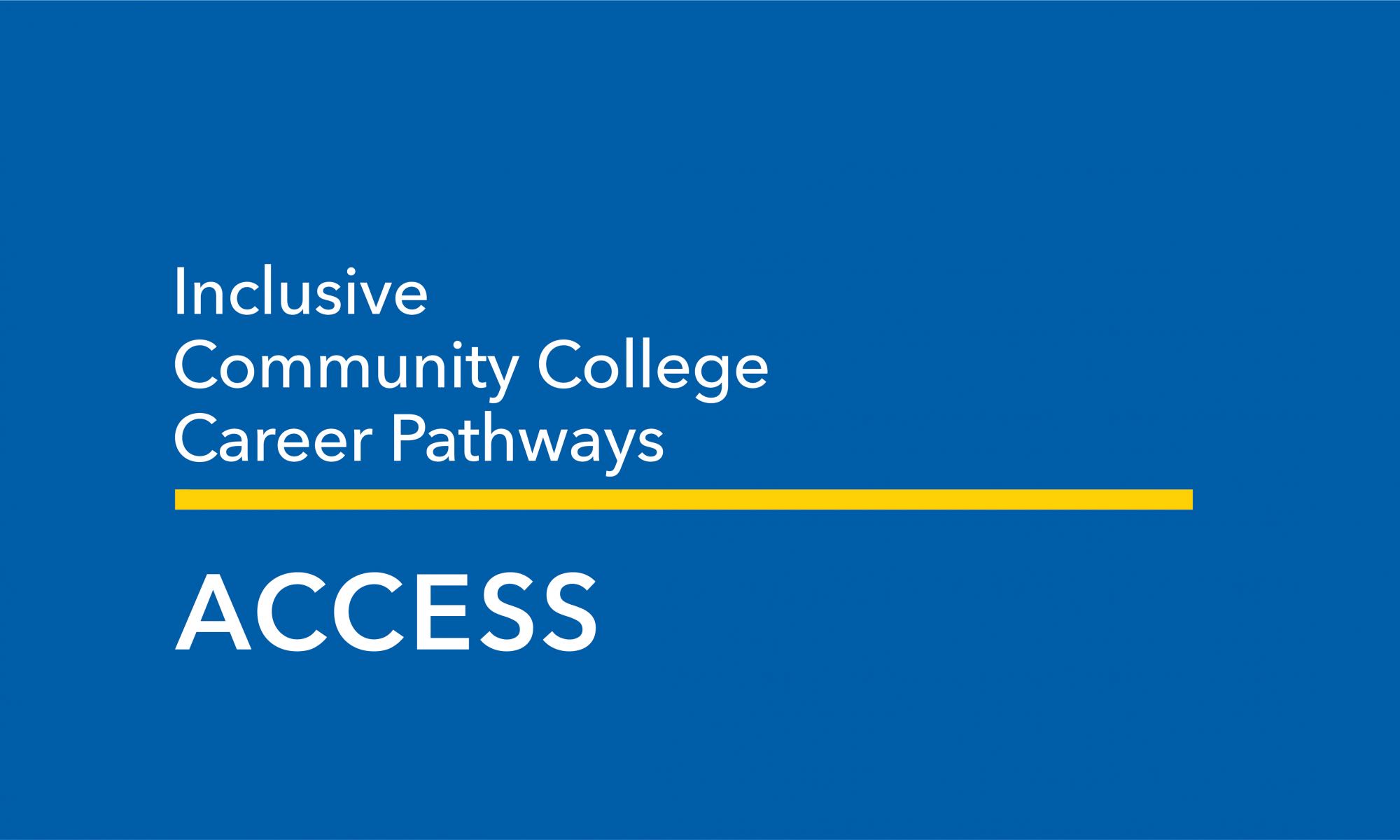This is the second of six installments in this series. Read the previous blog here. The next blog will discuss Universal Design for Learning.
How can students with disabilities better access a community college education? This is a question that Onondaga Community College and Pellissippi State Community College sought to address as part of their demonstration model grants from the U.S. Department of Labor. While accessibility can take many forms, the projects approached the issue from two key angles: (1) providing college “bridge” programs to prepare students with disabilities for success in community college, and (2) conducting audits and renovations to improve campus accessibility.
Creating bridges to college success for students with disabilities
Both demonstration projects offered programming to support students with disabilities as they prepare for the academic, independent living, and social demands of community college prior to starting classes. Onondaga’s OPC Scholars Program consisted of nine monthly workshops, held from October to June of a student’s senior year of high school, that covered a range of academic, career, independent living, and self-advocacy topics. Pellissippi State’s two-week Summer Academy served as an early orientation to introduce incoming students with disabilities to college staff, resources, and expectations. It also included workshops to help parents and family members navigate the transition process.
States developed a range of similar programs to prepare students with disabilities for college. For example:
- The Idaho Commission for the Blind and Visually Impaired hosts College Days, a summer program that prepares students to attend a trade school, two-year college, or university.
- The Alabama Department of Rehabilitation Services College Prep Program helps students with disabilities prepare for post-secondary training through exposure to the college environment, as well as guidance on self-advocacy, study strategies, and technology.
Campus-wide access and inclusion
To attend community college, students with disabilities must be able to physically access a school’s academic, residential, and extracurricular facilities and resources. Under Title II of the Americans with Disabilities Act (ADA), community colleges must make modifications and accommodations to ensure such access. Yet even with the ADA, modifications need to be carefully considered. For example, a wheelchair user may be able to access a computer lab using a ramp, but may struggle to sit at the computer desk if it is not the appropriate height.
Comprehensive efforts to make campuses accessible through adjustable furniture, curb cuts, signage, wide entrances, and updating emergency instructions to address the needs of students with sensory and mobility impairments are a few of many strategies campuses can implement. Additionally, implementing accessible technology policies, principles of universal design, and campus-wide inclusion and access initiatives help create an environment where everyone belongs.
Both Onondaga and Pellissippi State undertook campus-wide audits, alterations, and renovations to make their campuses more accessible. Onondaga engaged students in conducting a campus-wide accessibility audit, and replaced signage, altered furniture, and modified campus infrastructure where needed. The college also established a campus-wide closed captioning policy. Pellissippi State worked closely with the Tennessee Board of Regents to implement recommendations from its College Accessibility Initiative. This resulted in changes such as installing push-plate door openings, providing door-to-door transit to help students with disabilities get to campus, and adapting an online career assessment to be more accessible.
While few states focused specifically on improving the accessibility of college campuses, states adopted policies to generally increase building accessibility and incorporate principles of universal design. For example:
- The Tennessee Board of Regents’ Higher Education Accessibility Task Force developed a series of recommendations for how colleges and universities can make their campus environments more accessible. This led each campus to designate its own accessibility team.
- The California Education Code allows infrastructure grants to be used for “universal design facility renovations.” It also states that the Superintendent of Public Instruction must award grants based on “the use of universal design to provide inclusive environments” (among other considerations).

